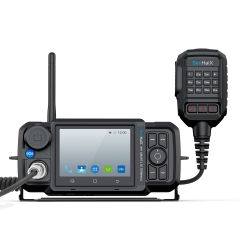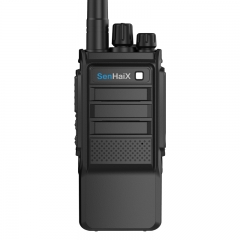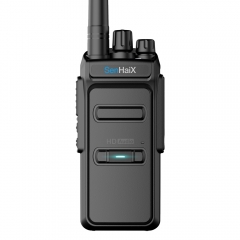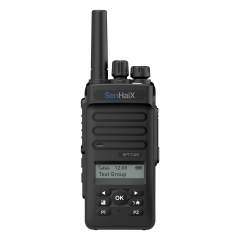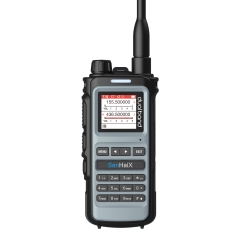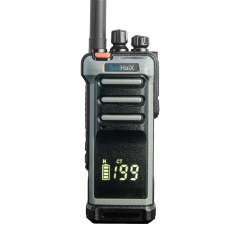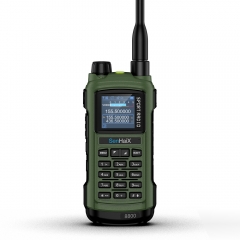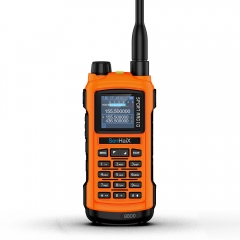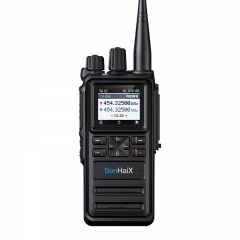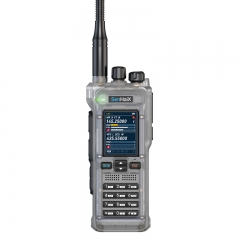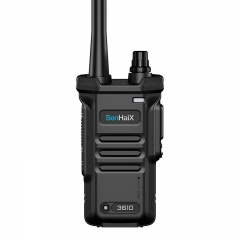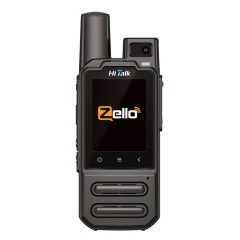In the walkie-talkie product introduction function information bar, you can always see CTCSS, CdcsS, DCS, DTCS, QT, DQT, PL, TPL and DPL and other English nouns, although the names are different, But all are to mark the equipment has the function of sub-audio signaling system, but the manufacturers have different names. What kind of function can CTCSS achieve? Today, I will talk with you about the relevant knowledge of sub-audio signaling of two way radios.
Types of CTCSS
Subaudio signaling can be divided into two types, one is called CTCSS, the other is called DCS. The English name of subaudio signaling is Continuous Tone Controlled Squelch System. It is a coding identification signaling technology that attaches a single tone frequency (67-250.3HZ) lower than the voice frequency to the audio signal and transmits it together, because its single tone frequency is lower than the voice frequency of 300HZ.
PL(Private LineCodes). PL signaling is actually CTCSS subaudio signaling, and some radios simply refers to this technology in terms of the functionality of a private security line.
The English name of the Digital subaudio (Coutinus Digital Controlled Squelech System) referred to as DCS or DTCS.DQT also shows that the digital audio, and you can also call DPL (digital private line).
Differences between CTCSS and DCS
CTCSS and DCS function the same, the difference is that it is digitally encoded and the audio signal is transmitted together. Both CTCSS and DCS belong to international common signaling standards. The frequency range of CTCSS is 67.0HZ-250.3Hz, there are 38 standard codes, each code of 01-38 has a corresponding frequency, such as code 01 corresponding frequency is 67.0HZ. The code of PL private line is indicated in English and numbers, such as the frequency of 67HZ its English code is "XZ".
Non-standard CTCSS
Each manufacturer selects the audio frequency below 300HZ according to different circumstances.
The purpose of two way radio using CTCSS
The purpose of using sub-audio technology in the design of two way radios is to avoid the influence of different users on each other, to avoid listening to unrelated calls and interference signals. Because it can stop voice and signaling interference from other users in the common channel, it is also called ToneLock.
When the transmitter of the walkie-talkie sends a voice signal at the same time, accompanied by the transmitter constantly sends out a sub-audio sustained signal, which is transmitted in the same channel after modulation. When the receiver receives the carrier signal and the CTCSS, it mediates. The subaudio signal is decoded in the input CPU through the filter shaping, and compared with the local preset CTCSS(DCS) code to determine whether to open the silencing circuit. Only when the same subaudio code is used, the audio output of the silencing circuit can be opened to emit sound through the speaker. Therefore, it can suppress unwanted voice and other signaling effects from other users in the shared channel.
Therefore, it can be said that it is a signaling identification system that improves the ability of communication network to resist external interference and solve the problem of non-network users entering the network through CTCSS signaling coding and decoding. At the same time, CTCSS(DCS) has the function of selecting calls, using continuous single audio coding to select calls, and always transmitting voice signals at the same time is the most effective method of selecting calls. As long as the main call press PTT, it can make a group call or a full call. When the intercom call is over, there is no need to press a button to hang up, which is simple, convenient and fast compared with the manual encoding of the call selection (DTMF) by telephone interconnection method.
Technical requirements for CTCSS(DCS)
CTCSS(DCS) technical index requirements are higher, should meet the Electronic Industry Association (EIA) standards, the general requirements of sub-audio frequency stability error value is less than ±1%, standard sub-audio single audio bias is: 0.5KHZ±20%, standard audio bias :3KHZ, maximum frequency bias: 5KHZ; Single tone silence sensitivity: It can work reliably when the receiver output signal-to-noise ratio is 8db, and DCS and CTCSS have some techniques that are similar.
Digital subaudio coding is a binary signal that changes DC according to the subaudio rate, and its biggest difference from CTCSS is that it can automatically emit a 134HZ tone at the end of each transmission as a "off code" (a method of suppressing noise trailing).
DCS is faster than CTCSS codec and has a lower bit error rate. At the same time, it has 104 codes, allowing it to have more users on the same channel.


















